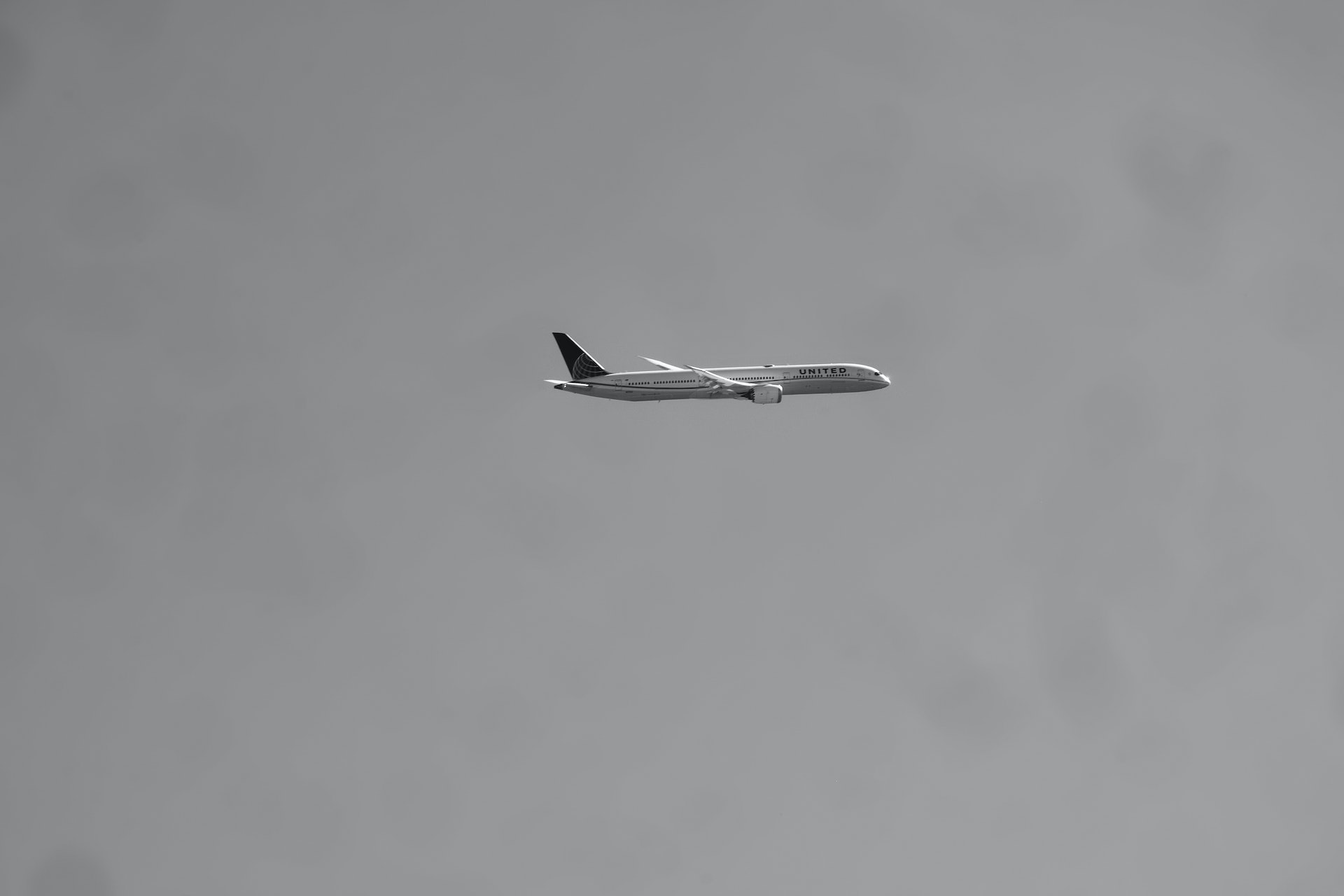
United Airlines CEO Scott Kirby sees surging demand, but has been unable to meet it. He credits three prevailing headwinds for strong revenue, but offers four problems that are constraining capacity growth.
United Airlines CEO Credits Three Factors For Positive Revenue Growth
Speaking at the third quarter investor call, Kirby laid out a three “tailwinds” that are propelling revenue, but also a number of factors constraining growth.
1. COVID-19
With vaccines and treatment for COVID-19 are now widely available around the world, some hold-outs have already been opening. Japan is now fully re-opened to foreign visitors and United Airlines is experiencing a surge in demand to the island nation.
Kirby still sees what some have referred to as “rebound travel” increasing and believes this will continue, not matter what ultimately happens to the nature of business travel.
“And regardless of whether you think demand for business travel will ultimately turn to 100% or something less, it almost certainly is going higher from here.”
2. Structural Change In Travel
We dedicated a whole story on this, but Kirby believes that hybrid work is the new norm, which will fuel a “new normal” of increased leisure travel.
“There has been a permanent structural change in leisure demand, because of the flexibility that hybrid work allows. With hybrid work, every weekend could be a holiday weekend. That’s why September, a normally off-peak month was a third strongest month in our history. People want to travel and have experiences, and hybrid work environment untethered them from the office and gave them the new found flexibility to travel far more often than before.”
> Read More:United Airlines Credits “Hybrid Work” For Higher Travel Demand
3. Limited Supply
Against the backdrop of this COVID-19 rebound travel plus a new hybrid travel environment, Kirby credits supply shortages as a revenue booster.
Four Reasons United’s Capacity Growth Will Remained Constrained
At the same time, while supply shortages may temporarily increase revenue by allowing airlines to charge more for tickets and other services, such shortages will limit growth for years to come. Specifically, Kirby places the blame on:
- pilot shortages
- aircraft delivery delays
- air traffic control staffing shortfalls
- airport infrastructure constraints
Kirby believes the pilot shortage issue will ultimately be addressed by the United Aviate Academy and other flight schools that will meet demand with supply for pilots.
While Airbus and Boeing delays continue, Kirby believes these will ultimately be full resolved.
Asked about Air Traffic Control during the earnings call, Kirby walked on eggshells not blame the Federal Aviation Administration (FAA):
“It’s not the FAA’s fault. And so, I think when you talk about extract, that’s probably the most important point. This is an agency that’s done an incredible amount of work over the last couple of decades, and they’ve been asked to do far more. The asks of the agency — the number of people at that agency that are working on growth, space launches, aircraft certification programs, and it’s just massively higher than it was before, and they were forced to fund that by taking headcount out of the operational budget, the day-to-day operational budget…
“[I]t’s a supply problem, until you fix the fundamental issue, it’s going to be challenging. Mostly works okay in a month like September, but we’re going to always have struggles in a month like July until we get staffed up to a level that’s more reflective of the amount of airline operations that are in the sky today.”
Finally, infrastructure investment will continue and ultimately lead to the ability to offer more flights. Kirby has chosen to pull United out of JFK after the FAA failed to grant it additional slots to provide more than two flights per day to each of its West Coast hubs. Kirby believes it is time for more fights into JFK to be allowed.
> Read More: United Airlines’ Smart Yet Unreasonable Chess Move At JFK Airport
> Read More:United Airlines Suspends JFK Service (Again)
At the same time, Kirby blames FAA staffing levels for its inability to scale in environments in in which is has already made tremendous infrastructure investment:
“This Sunday in Denver, where we have 114 operations per hour, beautiful, big airport, four parallel runways built. But it wound up with something like a couple of sick calls, and the airport operation, not clear blue sky, Sunday, it was cut from 114 to 68. We don’t get to use our infrastructure unless we have the human capital to support it, and it’s about to get the human capital to support all the infrastructure that we’re building.”
Conversations with the Biden Administration continue.
CONCLUSION
Kirby credits supply shortages for helping revenue, but also sees those same supply shortages as limiting growth. With pilot shortages, aircraft delivery delays, air traffic control staffing shortfalls, and airport infrastructure constraints set to remain a problem for the foreseeable future, United’s ability to scale up operations remains limited.




In regards to business travel, some places on Wall Street had initially planned on reducing travel because of the current economic situation. However, many places are doing internal studies and have shown that the productivity of virtual meetings has greatly reduced productivity and work being done, so they’re reversing their decisions and sending people out to recoup lost revenue. My employers are sending me to stay in Korea and Japan for a month each this coming winter and I’m not complaining.
United is still going to be able to grow in the coming years. Maybe not as much as they originally hoped, but they still can grow.
Take Denver for example. Just today the new B-East expansion gates opened in Denver. The new A-West gates that United is getting in Denver should be opening next month. Denver is just one example, United is set to get new gates at ALL hubs in the coming years.
United has taken 3 new max deliveries in the past week, and that rate is going to continue for the next year plus.
Between all the new planes and gates, there should be room for growth in the near future. I expect to see new domestic routes as well as new short haul international routes in the coming months.
Maybe they can add an 11th seat across on the 777 in Y.
I wouldn’t put it past them….”This is what the people are demanding!”
Business travel increasing from current levels, plus leisure travel still being higher given the apparently permanent shortening of the in-person work week, should mean higher travel revenues in 2023, but especially 2024/2025…
Buying Alaska Airlines……problem solved
UA will buy JetBlue. The stock price is so low that they could buy it with the money behind seat cushions and from recycling aluminum cans from the planes.
UA is a distant 3rd place up and down the East Coast. JetBlue will not be able to digest Spirit and will not be able to get enough pilots to support its ambitious growth plans.
I’ve experienced two business consolidations. If done wrong, money goes bleeding out the door at a phenomenal rate.
To succeed, B6 needs a master plan already in place; key players already identified; solid delivery dates established; company wide goals CLEARLY COMMUNICATED to all . There is no room of a committee of a sub committee of a sub committee BS; you need to hit the ground running!!! Egos will be hurt, good people will be let go in error, but you cannot hesitate one second.
If B6 drops the ball, the only way out is bankruptcy putting themselves into play. Other airlines may see this as an opportunity, but they cannot afford to repeat the same mistakes and end up down the rabbit hole as well.
If in doubt, refer to the New York Central and Pennsylvania RR merger of 1968. The largest bankruptcy in its day.
Great post. I’m glad Kirby is speaking up about these issues only the government can fix. Also, I think you meant tailwinds instead of headwinds in the first paragraph.